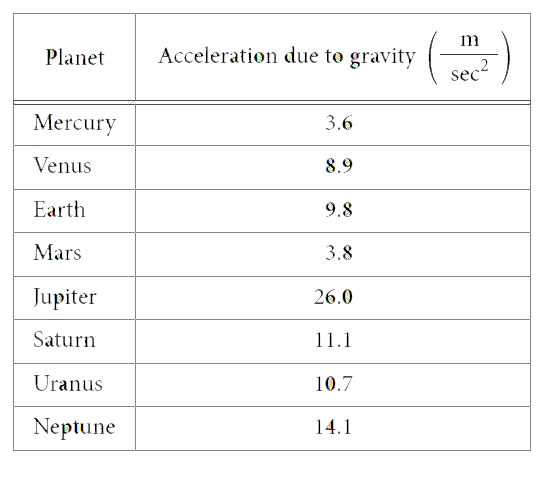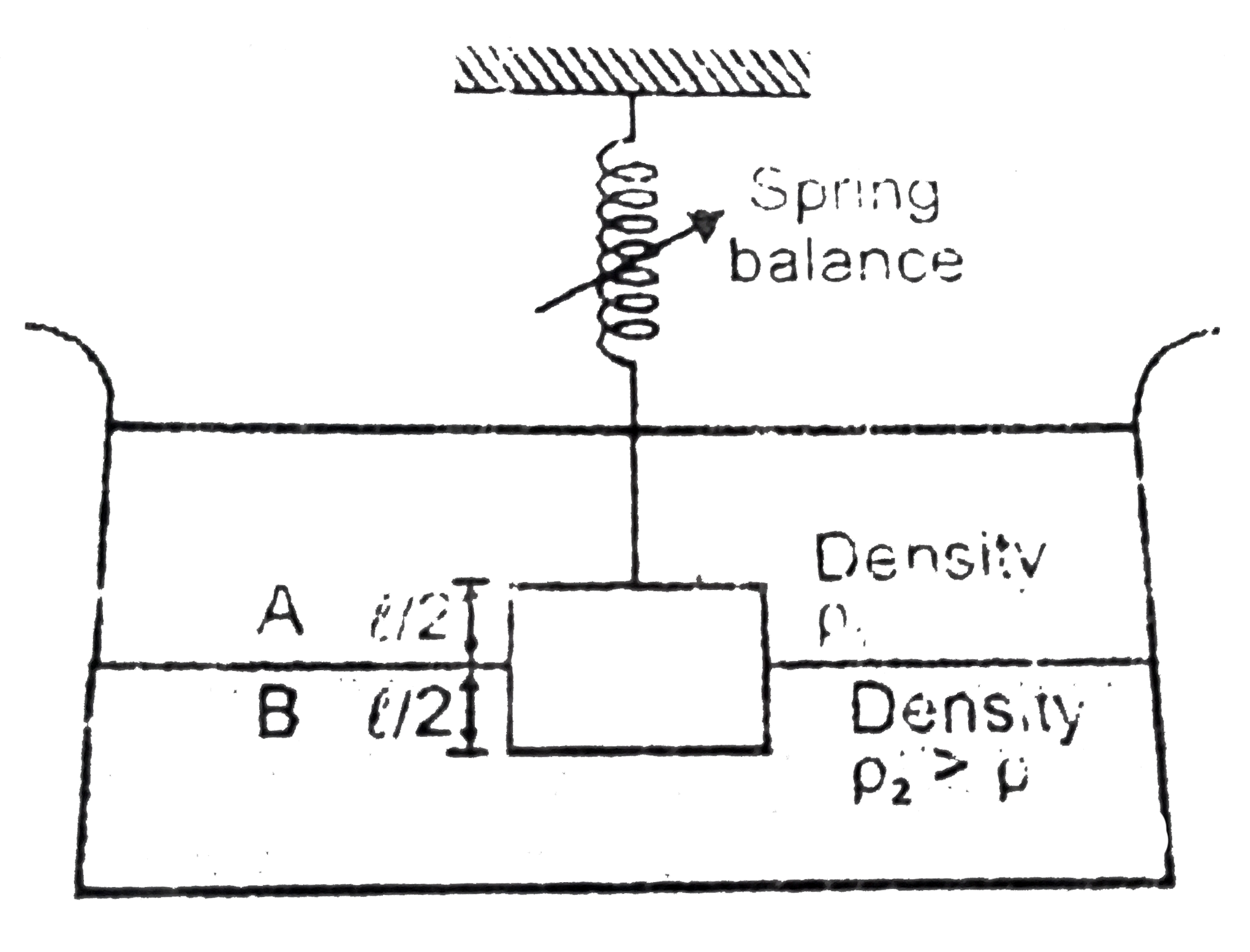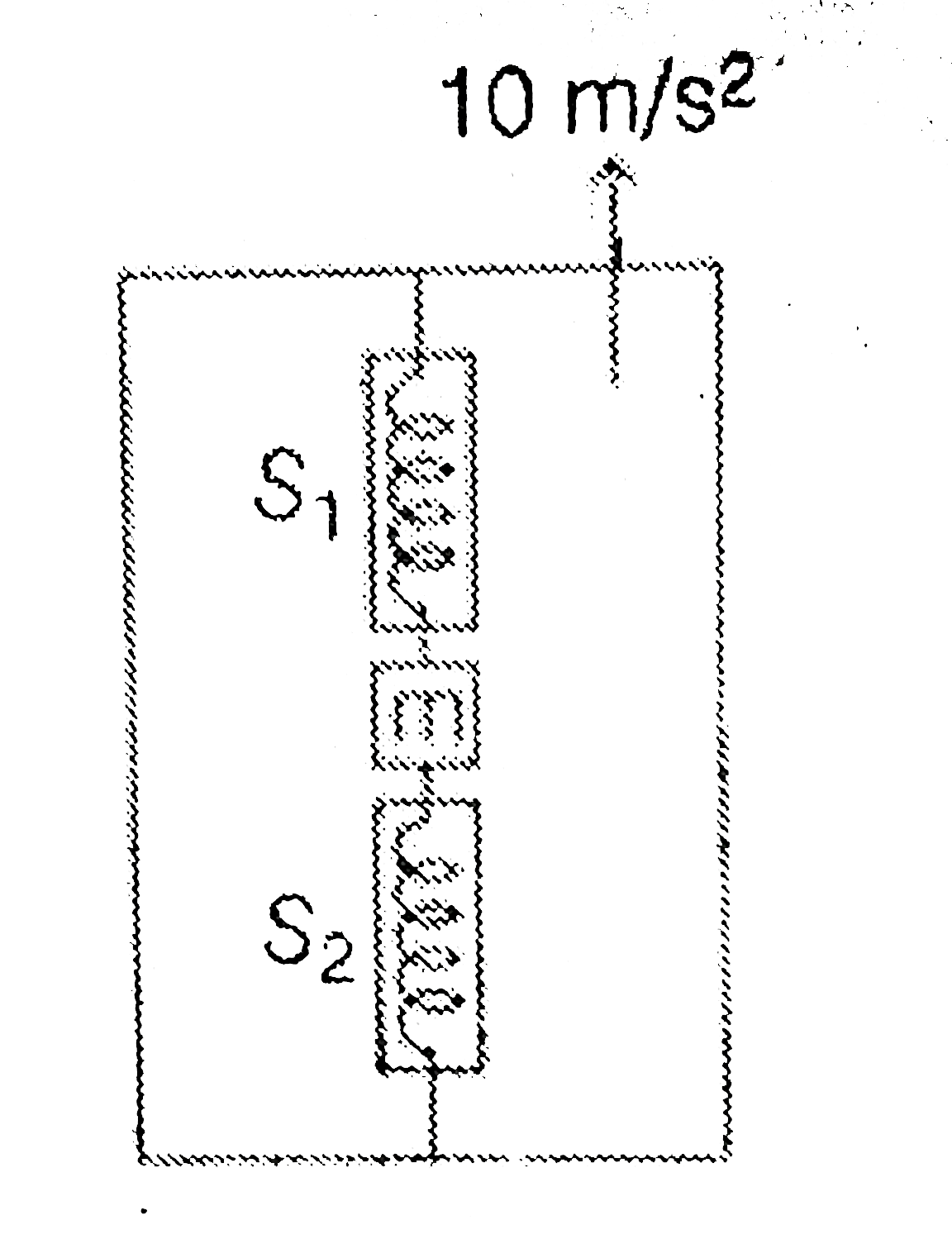An object is weighted at the North Pole by a beam balance and a spring balance, giving readings of WB and WS respectively. It is again weighed in the same manner at the equator, giving readings of W'B and W'S respectively. Assume that the acceleration due to gravity is the same everywhere and that the balance are quite sensitive, Choose the wrong option
Wb=Wb'
Wb=Ws
Wb'=Ws'
Ws'>Ws
The correct Answer is:A, C, D
To solve the problem, we need to analyze the readings of the beam balance and the spring balance at both the North Pole and the equator.
1. Understanding the Balances:
- A beam balance measures weight based on the gravitational force acting on the object and is not affected by the rotational motion of the Earth.
- A spring balance measures weight based on the force exerted by the object on the spring, which is affected by both gravitational force and the centrifugal force due to Earth's rotation.
2. Weight Measurements at the North Pole:
- At the North Pole, the angular velocity (ω) of the Earth is zero because the object is at the axis of rotation.
- Therefore, the readings will be:
- Beam Balance: WB (true weight)
- Spring Balance: WS=WB (since there is no centrifugal force acting on the object).
3. Weight Measurements at the Equator:
- At the equator, the object experiences the maximum centrifugal force due to Earth's rotation.
- The readings will be:
- Beam Balance: W′B=WB (still the true weight)
- Spring Balance: W′S=WB−Fc, where Fc is the centrifugal force acting on the object at the equator.
4. Centrifugal Force Calculation:
- The centrifugal force can be calculated as Fc=mω2r, where m is the mass of the object, r is the radius of the Earth, and ω is the angular velocity of the Earth.
- Since Fc acts outward, it reduces the effective weight measured by the spring balance at the equator.
5. Comparison of Weights:
- Since W′S<WB (because of the centrifugal force), we conclude that:
- W′S<WB=W′B
- Therefore, the spring balance reading at the equator will be less than the beam balance reading.
6. Identifying the Wrong Option:
- Given the options provided (A, B, C, D), we need to determine which statement is incorrect based on our analysis.
- Since we established that the spring balance reading at the equator is less than the beam balance reading, any statement claiming otherwise would be incorrect.
Conclusion:
After analyzing the situation, we find that the incorrect statement is option C, which likely states that W′S is greater than or equal to WB or W′B.
- A beam balance measures weight based on the gravitational force acting on the object and is not affected by the rotational motion of the Earth.
- A spring balance measures weight based on the force exerted by the object on the spring, which is affected by both gravitational force and the centrifugal force due to Earth's rotation.
- At the North Pole, the angular velocity (ω) of the Earth is zero because the object is at the axis of rotation.
- Therefore, the readings will be:
- Beam Balance: WB (true weight)
- Spring Balance: WS=WB (since there is no centrifugal force acting on the object).
- At the equator, the object experiences the maximum centrifugal force due to Earth's rotation.
- The readings will be:
- Beam Balance: W′B=WB (still the true weight)
- Spring Balance: W′S=WB−Fc, where Fc is the centrifugal force acting on the object at the equator.
- The centrifugal force can be calculated as Fc=mω2r, where m is the mass of the object, r is the radius of the Earth, and ω is the angular velocity of the Earth.
- Since Fc acts outward, it reduces the effective weight measured by the spring balance at the equator.
- Since W′S<WB (because of the centrifugal force), we conclude that:
- W′S<WB=W′B
- Therefore, the spring balance reading at the equator will be less than the beam balance reading.
- Given the options provided (A, B, C, D), we need to determine which statement is incorrect based on our analysis.
- Since we established that the spring balance reading at the equator is less than the beam balance reading, any statement claiming otherwise would be incorrect.
After analyzing the situation, we find that the incorrect statement is option C, which likely states that W′S is greater than or equal to WB or W′B.
Topper's Solved these Questions
- GRAVITATIONBOOK - RESONANCE ENGLISHCHAPTER - GRAVITATIONEXERCISE - EXERCISE-2 PART-4
9 Videos
- GRAVITATIONBOOK - RESONANCE ENGLISHCHAPTER - GRAVITATIONEXERCISE - EXERCISE-3 PART-1
15 Videos
- GRAVITATIONBOOK - RESONANCE ENGLISHCHAPTER - GRAVITATIONEXERCISE - EXERCISE-2 PART-2
10 Videos
- GEOMATRICAL OPTICS BOOK - RESONANCE ENGLISHCHAPTER - GEOMATRICAL OPTICS EXERCISE - Advance level Problems
35 Videos
- NUCLEAR PHYSICSBOOK - RESONANCE ENGLISHCHAPTER - NUCLEAR PHYSICSEXERCISE - Advanced level solutions
16 Videos
Similar Questions
There are two bodies A and B of same mass. A is placed near equator of earth and B is placed at a height h above the pole of earth. if both the bodies weighs equally. Find h in terms of radius R of earth, angular speed ω of earth and g acceleration due to gravity close to earth.
View SolutionA body suspended on a spring balance in a ship weighs W0 when the ship is at rest. When the ship begins to move along the equator with a speed v, show that the scale reading is very close to W0(1±2ωV/g), where ω is the angular speed of the earth.
View Solution
Knowledge Check

The chart above shows approximate of the acceleration due to gravity in meters per second squared (msec2) for the eight planets in our solar system. The weight of an object on a given planet can be found by using the formula W=mg, where W is the weight of the object measured in newtons, m is the of the object measured in kilograms, and g is the acceleration due to gravity on the planet measured in msec2.
An object on Earth has a weight of 150 newtons. On which planet would the same object have an approximate weight of 170 newtons?AvenusBsaturnCuranusDneptune
A cubical block (side l) is in equilibrium at the interface of two liquids A and B. The spring balance reads W Newton. If the block is weighted in air, the reading of the spring balance will be :

View SolutionA man stands on a weighing machine kept inside a lift. Initially the lift is ascending with the acceleration 'a' due to which the reading is W. Now the lift decends with the same acceleration and reading 10% of initial. Find the acceleration of lift ?
View SolutionA body weights 98 N on a spring balance at the north pole. What will be its weight recorded on the same scale if it is shifted to te equator? Use g=GMR2=9.8ms2 and the radius of the earth R=6400 km.
View SolutionA and B are moving with the same speed 10m/s in the direction E−30∘−N and E−30∘−S respectively. Find the relative velocity of A w.r.t. B.
View SolutionA long non-conducting, massless rod of length L pivoted at its centre and balanced with a weight w at a distance x from the lefrt end. At the left and right ends fo the rod are attached small conducting sphers with positive charfges q and 2q respectively. A distance h directly beneath each of these spheres is a fixed sphere with positive charge Q.
(a) Find the distance x where the rod is horizontal and balanced.b. What valueshold h have so that the rod exerts no vertical force on the bearing when the rod is horizontal and balanced?
View SolutionReading shown in two spring balances S1 and S2 is 90kg and 30kg respectively and lft is accelerating upwards with acceleration 10m/s2.S1 in elongated and S2 is compressed. The mass is stationary with respect to life. Then the mass of the block will be

View SolutionA block with a mass of 2kg hangs without vibrating at the end of a spring of spring constant 500N/m, which is attached to the ceiling of an elevator. The elevator is moving upwards with an acceleration g3. At time t=0, the acceleration suddenly ceases.
(a) What is the angular frequency of oscillation of the block after the acceleration ceases ?
(b) By what amount is the spring stretched during the time when the elevator is accelerating ?
(c )What is the amplitude of oscillation and initial phase angle observed by a rider in the elevator in the equation, x=Asin(ωt+ϕ) ? Take the upward direction to be positive. Take g=10.0m/s2.
View Solution
